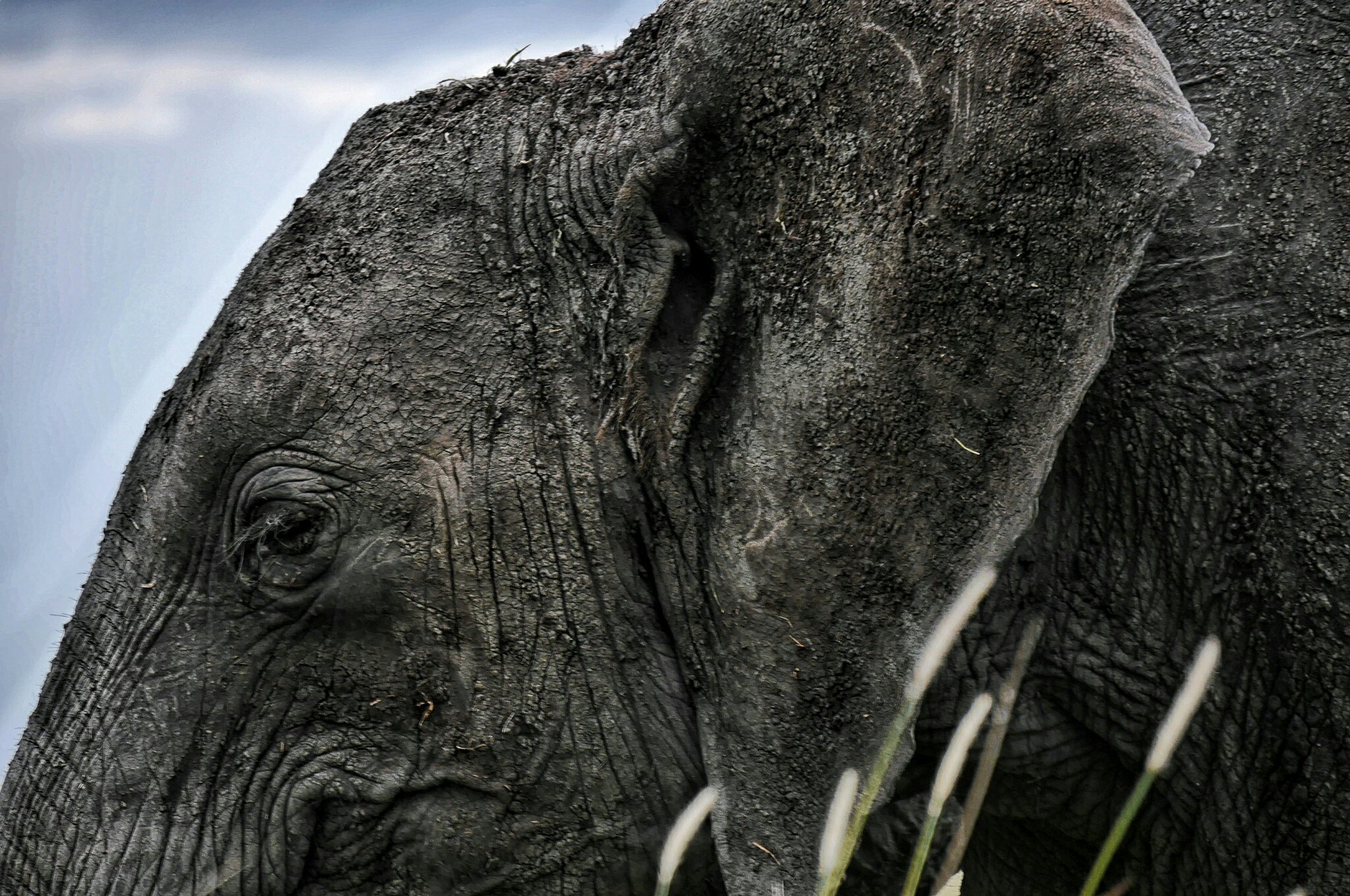After two full days in the Ngorongoro National Park, we headed towards the Serengeti on the third day of our self-drive safari in the morning. It should be noted here that the entrance to the national parks is always for a full 24 hours. Since we had checked into the Ngorongoro at about 10:30 am we had to check out at this time at the latest. If one is over the time one must pay again full 24 hours.
Therefore, you should plan enough time and drive in time to Naabi Hill Gate. After a few kilometers on the main road you will reach the entrance gate of the Serengeti. The Naabi Hill Gate for registration is a bit further away. But as soon as we entered the Serengeti, we saw some new animals. First a hyena and shortly before the Naabi Hill Gate even a cheetah… we were already excited and curious what else would await us on our self-drive safari in the Serengeti.
Self Drive Safari Serengeti: Entrance Naabi Hill Gate
When you get to Naabi Hill Gate on your self drive safari in Serengeti, there is a small counter on the right side to check out. Here you stamp your Ngorongoro permit and that’s it. After that you can do the registration for the Serengeti on the left side in a larger building. Or you do it like us and take an extensive break and use the free Wifi.
Meanwhile, you can watch the colorful birds and lizards that constantly run around you. In addition to the rather small birds, a large marabou ran right past us and could be patiently photographed. After we had dawdled enough we finally started. So quickly to the registration, back to the car and then through the gate.
Self-Drive Safari Serengeti: Day 1
Also on our self-drive safari through the Serengeti we wanted to stay away from the terrible main roads. That’s why we had chosen the road that leads directly north at Naabi Hill Gate to the Gol Kopjes. After the first meters behind the gate we became skeptical. Where is the road???? So back to the gate and asked a guide.
The road does not lead off to the right behind the gate, but about 100 meters in front of it. According to the guide’s info, you need an extra permit for this (which was never checked, by the way), which costs another $10. With the hundreds of dollars we had already spent, that didn’t matter anymore. So back into the registration building, back through the gate and then finally towards Gol Kopjes. The guide had pointed out to us that it was a difficult route and asked if we were sure that we wanted to drive it alone.
Into the Serengeti for free?! A not-so-serious tip: Since the entrance to the Gol Kopjes is before the actual gate into the Serengeti and we were not checked once o nour entire trip, we could have driven in and out the park without having to pay the horrendous fees.
Gol Kopjes and Simba Kopjes
We did not find the difficult part of the route. After our trip through the Ngorongoro National Park the route to the Gol Kopjes and also to the Simba Kopjes was a piece of cake. Already after the first kilometers towards Gol Kopjes we saw the first lioness. Wow… again we were blown away. The Kopjes are rocks that cheetahs and lions in particular like to use as resting places. So, as previously researched, we thus also encountered more cheetahs at the Gol Kopjes and more lions at the Simba Kopjes.
When we later came back towards the main road, the safari cars we encountered became more and more numerous. To compensate for the disadvantage that one does not find animals so easily without a guide, we kept a lookout for other cars and simply followed them. Whenever we saw two or more cars standing somewhere it was clear that there was an animal waiting to be photographed. After lions and cheetahs only one highlight was missing for me now…. Elephants.
And they were not long in coming. Towards the afternoon we encountered a whole herd… and all alone. The elephants with their babies were right next to the road. I couldn’t believe how lucky we were. The elephants were not disturbed by us and continued to walk comfortably.
Nguchiro Public Campsite
After such a successful day we drove to our campsite, the Nguchiro Public Campsite in Seronera and hoped to end the evening in a relaxed way. Arrived at the campsite everything went as usual. Andreas set up the tent and I provided tables, chairs and the gas stove, so we could make something to eat. But on our campsite there were not only people… but also monkeys.
When I had put the basket with the fruit and vegetables next to the car for only a few seconds, a fat baboon had already stolen our pineapple and disappeared with it in safe distance. So there was no fruit for dessert for us today. Also the relaxed dinner we had to skip due to the dark clouds and the starting rain. So we had only a quick dinner and then crawled into our cozy tent.
In the night we woke up several times from loud roar, which sounded very similar to lion roar. But we were not really sure. Nevertheless, I skipped the nightly walk to the toilet. And that was actually a good idea. Because the next morning we discovered numerous, voluminous paw tracks in the mud. And from other guides we learned that actually some lions had walked through the camp during the night. Phew… Lucky!
Self Drive Safari Serengeti: Day 2
On day 2 of our self-drive safari through the Serengeti, we drove in the morning to the two Hippo Pools, which are only about 30 minutes away from Seronera Camp. At one of them (Tripadvidsor link) you could even get out and get pretty close to the smelly and loudly belching hippos. But don’t get too close, because the one or the other crocodile we have also sighted in the pool.
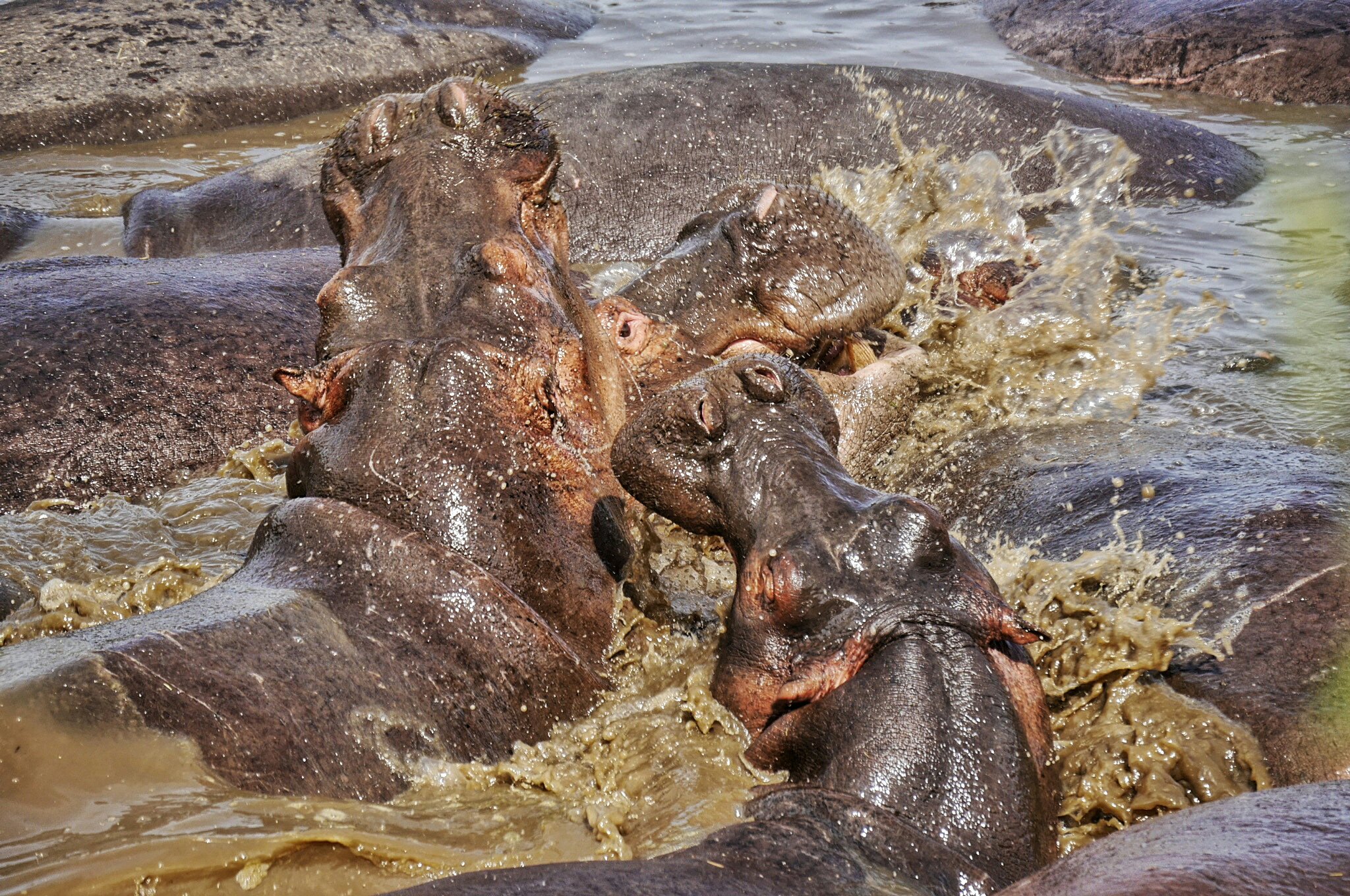
At the other Hippo Pool (which is called Hippo Loop funnily enough and can be reached from the first Hippo Pool, in which one arrives on the main road left and after about 300 meters again right into the signposted way turns) one could not get out, but for it we were alone for quite a while and so Andreas used the opportunity to let his drone rise. The views of the hippos, however, are clearly more intense at the first pool, even if we have seen here not much less hippos.
We spent the next hours of our self-drive safari through the Serengeti following other cars in order to get more animals in front of the lens. Unfortunately, that didn’t really work out. We didn’t see any animals for the next hour. In our desperation, we then chose a lonely route that led a bit out of the center of the Serengeti.
And there it happened: On a slight incline, the car stopped accelerating and almost stopped.
I was briefly irritated, and then only after a quick glance at the dashboard did I see that the engine temperature gauge was well into the red zone. I immediately stopped and turned off the engine.
Bye Bye cooling water – Hello Car Breakdown
We got out and opened the hood, although of course we have no idea about cars. But it was relatively easy to see that a hose on the engine block was not where it should be, but was wiggling loose in the air. The hose probably belonged to the cooling circuit and the consequence was that our complete cooling water had leaked out. No wonder that the engine overheated.
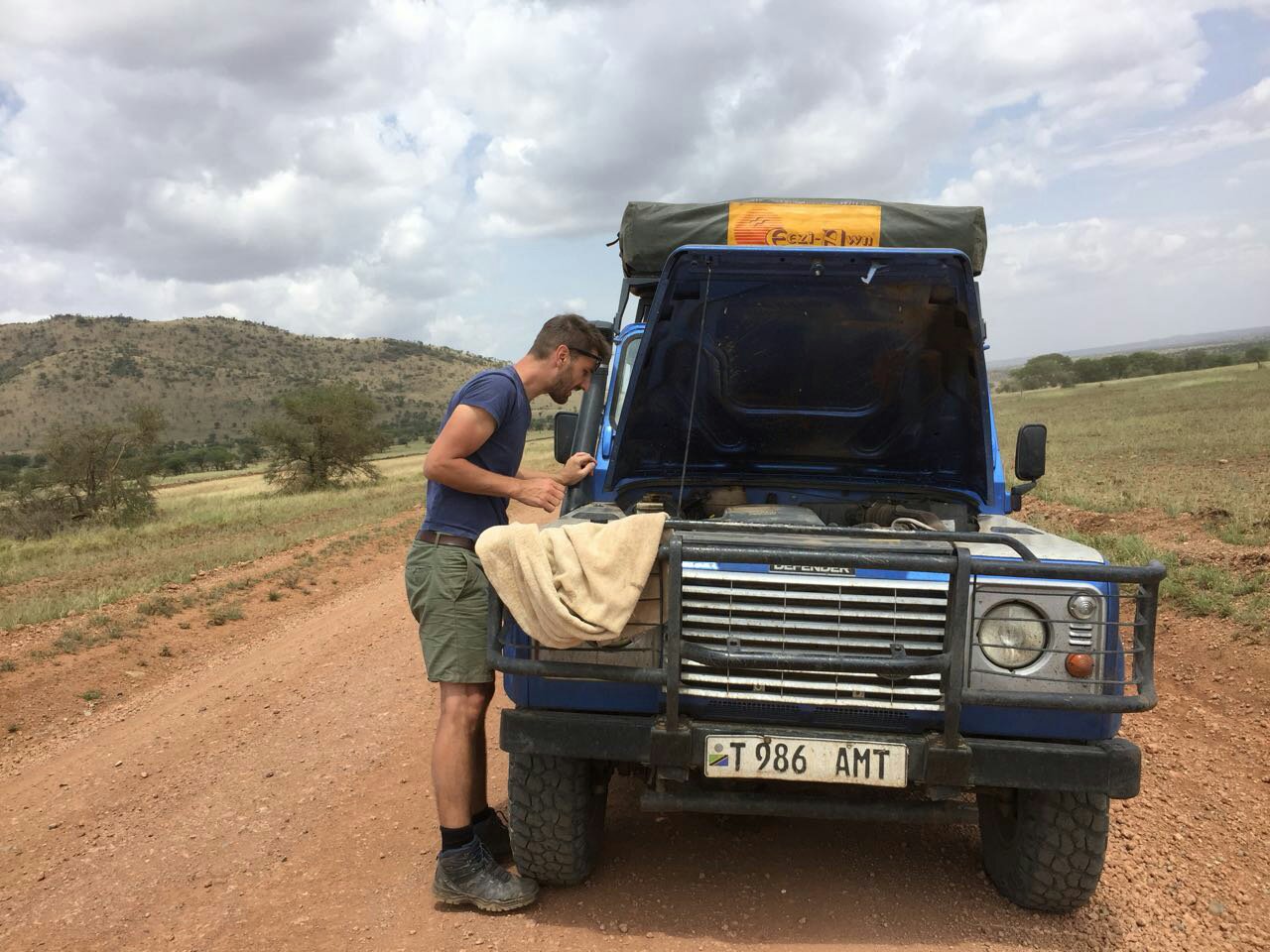
In our perplexity, we texted my dad to ask him what exactly we should do. His advice was to wait half an hour and then slowly dump fresh water into the car’s cooling system. After a very long half hour, we then poured fresh drinking water into the water tank and slowly drove off. It went well for the first few miles, but after a few minutes the temperature gauge went back into the red.
So we stopped again and poured new water. In the meantime other cars stopped and offered us help. So we poured water again and saw how the temperature fell into the green range. The whole game was repeated 4 times and each time we poured new water (in total about 8 liters) until the car finally ran smoothly. The drama cost us almost the entire afternoon.
We had already adjusted ourselves to the fact that it had probably been with the Serengeti. We wanted to drive only a small detour by the steppe south of the Campsites, in order to arrive afterwards again at our campground.
1,2,3 many… thousands of zebras and wildebeests
And there we suddenly saw them. The huge herds we had only hoped to see so far. Thousands of zebras and wildebeests were in front of our eyes, animals as far as the horizon. We couldn’t believe it, we were so amazed. Most of the animals were not moving, but resting or relaxing under the few trees available.
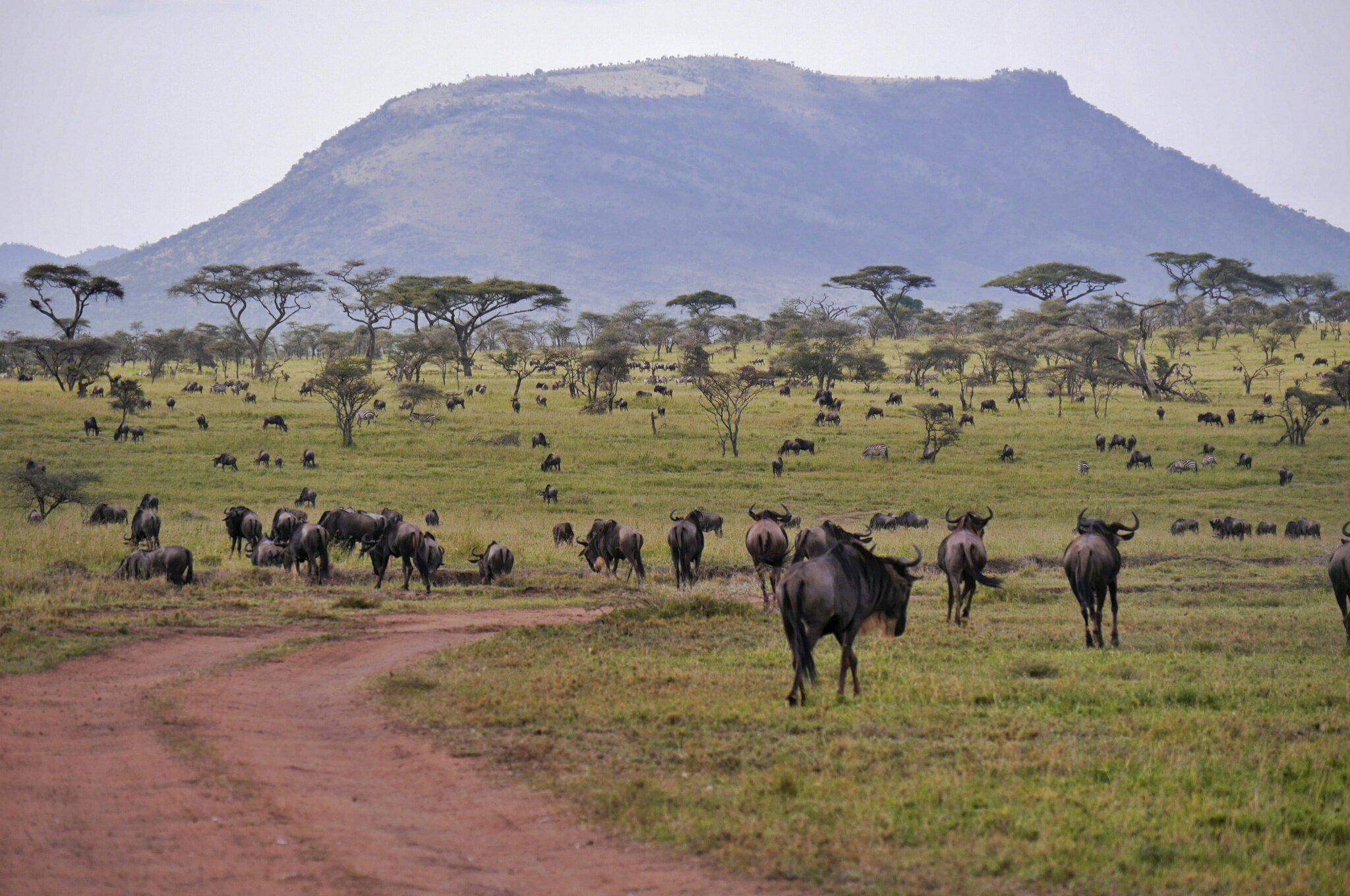
This sight was one of the most impressive of our entire self-drive safari and we were very happy to have discovered this spectacle without a guide and by pure chance. After we had enjoyed this spectacle we drove back to our camp and set up the tent as usual and made our meal. We also had a small bottle of wine with us (thank you Emirates Airlines!) to end the evening in a proper way.
It was New Year’s Eve after all. However, a thunderstorm came up relatively quickly, so we retreated to our roof tent with our pot of tortellini, watched a series on Netflix, and let the thunderstorm wash over us. Around 10pm we fell asleep despite the pelting rain and were only briefly awakened from our sleep by unusually loud noises (this time human rather than animal). Happy New Year!
Trip to Olkarien Gorge: 2nd Try
The next morning we started early, because we had the crazy plan to go to Olkarien Gorge. We wanted to do this already on our 2nd day in the Ngorongoro National Park, but the empty tank put a spoke in our wheel. So this time we drove as fast as possible over the really impossible main roads of the Serengeti and the NCA. We were shaken and dusted to the extreme. Who has not experienced it himself will not be able to imagine this ride, which resembles a ride on grandma’s old washing machine.
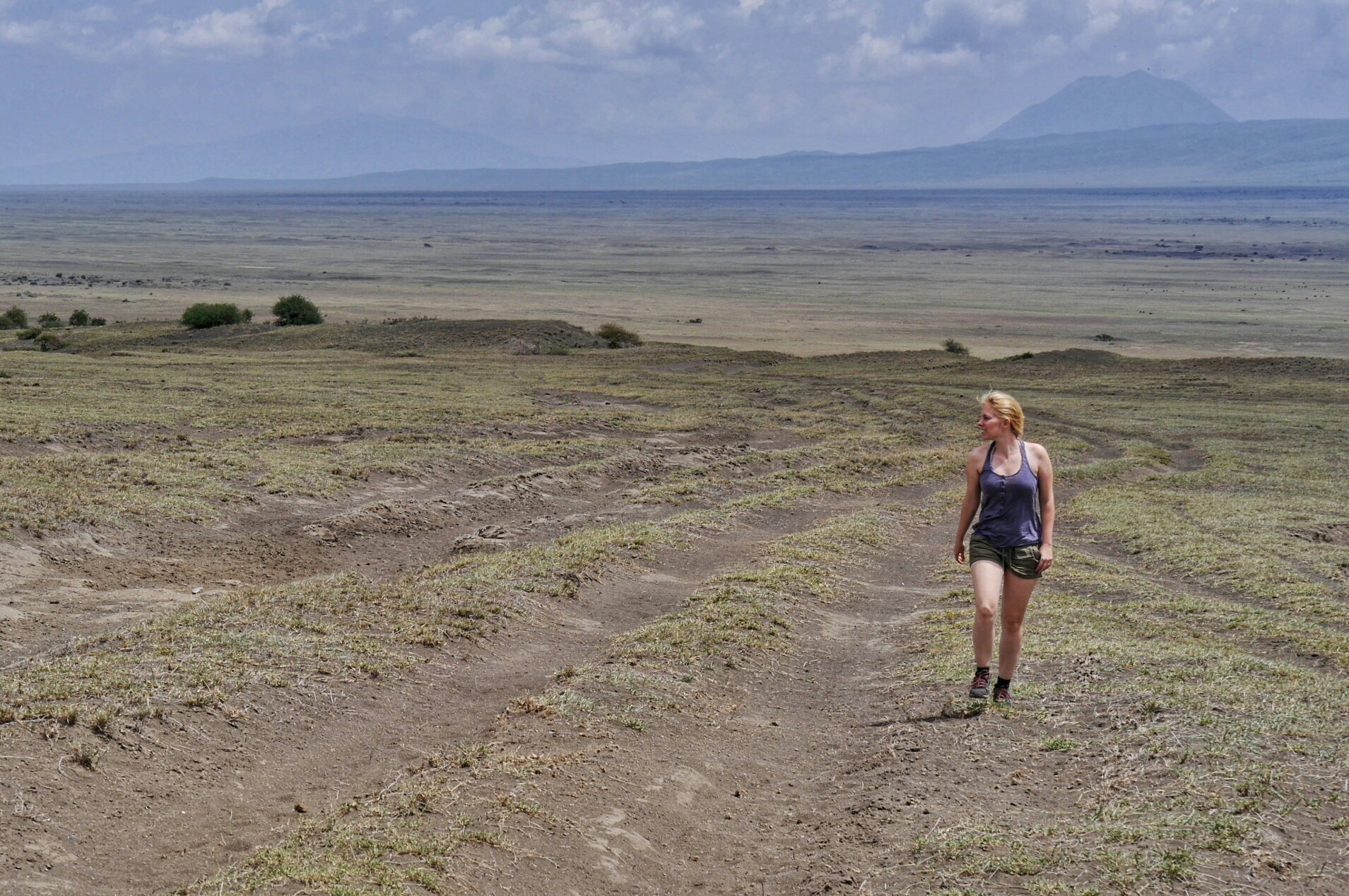
After about 2 hours of speeding we finally arrived at the turnoff. We were looking forward to it, because on the side roads the road conditions are actually always better. It was almost noon, but we could not imagine at this point that the following 50 kilometers were incredibly varied, but also partly only at walking speed to drive. It went alternately through sandy plains, through a small river, through small forests and finally over large hilly landscapes.
We drove north for 3 hours and didn’t meet any other car on the whole way. Only the Masaai we have always seen, even if we have stopped only briefly. Mostly they walked over to us from a great distance to greet us, ask us about our destination or just stare at us. But in this lonely area in the northern Ngorongoro National Park we did not have even one negative experience with the Masaai. All of them were friendly, interested and sometimes even scared and none of them begged.
After a glance at the clock, however, we realized that there was no way we were going to make it to the Gorge and back to Simba Camp (which was the destination for our day) by sunset. Not to mention an extensive hike in the gorge. So with a very heavy heart we made the decision to give up and turn back. Until today we do not regret to have planned more time for the trip.
We don’t even know how long it would have taken. From the turnoff at the main road it is surely 3-4 hours to get there. In general it is more of a day trip. So if you also plan to do it then take enough time and also diesel with you!
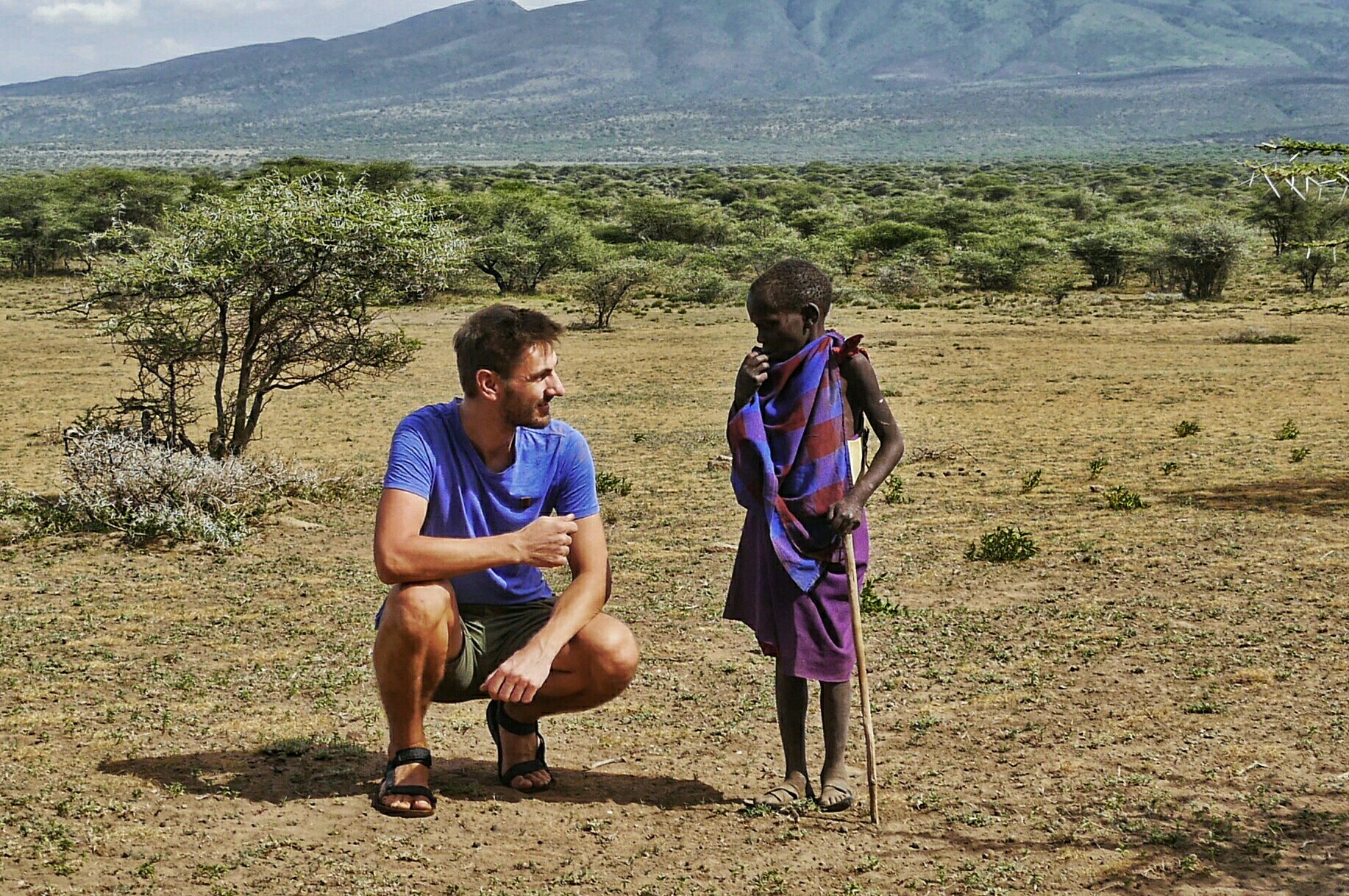
After our return we drove to the Simba Public Campsite and made ourselves comfortable there as one of the first individual campers on the lawn with a view of the crater. At this early time the lawn of the camp was still populated by zebras and marabou, which didn’t seem to mind us at all. Thank goodness for the hot showers at this campsite, so we were able to spend the last hours of our safari freshly showered and with a spectacular view from the crater rim.
Return to Arusha
The last day of our self-drive safari actually consisted of driving back to Arusha to drop off the car. On the way there we stopped at one of the numerous souvenir stands to buy oil paintings, which are offered for sale every few kilometers.
After tough negotiations, in which we had pushed the price for our desired pictures on approx. 1/3 of the original price we could start with 8 pictures in the hand the further return journey and arrived around 14 o’clock in Arusha. After dusting off and repacking all our stuff, we were taken to Kilimanjaro Airport for a flight to Zanzibar to start the more relaxed part of our vacation.
How to get from Tanzania to Zanzibar and what we experienced there you can read in the following travel report:





